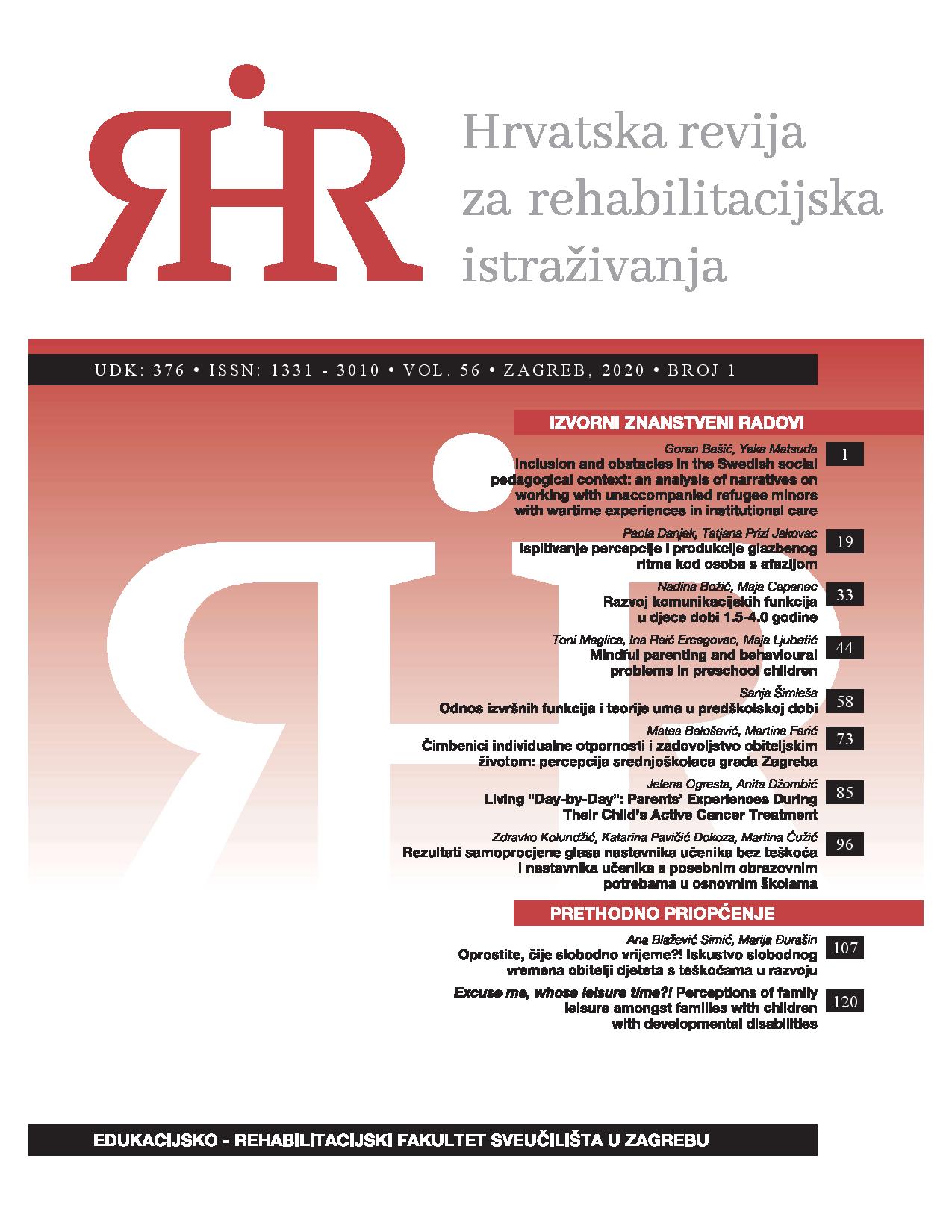Razvoj komunikacijskih funkcija u djece dobi 1.5-4.0 godine
Development of communication functions in children aged 1.5-4.0 years
Author(s): Maja Cepanec, Nadina BožićSubject(s): Language and Literature Studies, Psycholinguistics, Theory of Communication, Developmental Psychology
Published by: Sveučilište u Zagrebu, Edukacijsko-rehabilitacijski fakultet
Keywords: Language Use Inventory (LUI-Croatian); pragmatic skills; communication development; late communication functions;
Summary/Abstract: Pragmatic knowledge is an important aspect of communication competence, which consists of communication functions that a person uses and of the rules on how to use those functions in a socially appropriate way. Studies on typically developing children confirm the occurrence of a large number of communication functions at an early age. However, available data do not provide us with a clear and generally accepted developmental course of communication functions in children older than 18 months. Therefore, the aim of the present study was to gain insight into the order and time of appearance of later communication functions such as seeking information, commenting, developing narrative abilities and being funny. The study used the non standardised research adaptation of the Language Use Inventory (LUI Croatian) to collect data on 134 typically developing children aged 18-47 months.After the age of 18 months, communication functions expanded systematically, and children began to communicate in an increasingly complex, abstract and creative way. Some early appearing communication functions became more complex and involved more advanced communication forms. At first, children communicated about objects and their own activities (18-23 months), then about their own perspective (what they thought, liked or wanted), other people's activities (24-29 months), someone else's perspective (what the other person wanted or liked), unfamiliar words and statements by others (30-35 months) and lastly, other people's thoughts and (social) rules (36-47 months). Developmental progress was also observed in their humor (which was achieved initially nonverbally and later verbally) and storytelling. Developmental communication changes and their quality suggest that they rely heavily on the development of sociocognitive ability (theory of mind) and language ability.
Journal: Hrvatska revija za rehabilitacijska istrazivanja
- Issue Year: 56/2020
- Issue No: 1
- Page Range: 33-43
- Page Count: 11
- Language: Croatian

